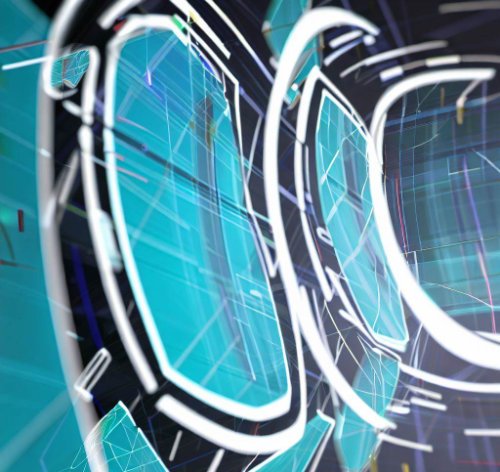The Architect's Guide to Building 3D Website
Here's a quick summary of the main points covered in this comprehensive guide to building 3D websites:
- Understanding the Power of 3D: 3D design provides a depth dimension, creating an effect of depth perception and offering an immersive user experience.
- Choosing the Right Technologies: The choice of technology is crucial for building a 3D website. Options range from WebGL and Three.js for visually stunning sites to game engines like Unity or Unreal Engine for an immersive experience.
- Designing the User Interface: The 3D website's user interface should balance a visually appealing design with a seamless user experience. Interactive elements can be incorporated to engage users effectively.
- Creating the 3D Content: The creation of 3D content involves 3D modeling, texturing, lighting, and rendering. Special effects can further enhance the user experience.
- Implementing the Design: The design and content need to be brought together using the chosen technology. Testing at every stage of implementation helps identify and fix issues early in the development cycle.
- Testing the Website: Comprehensive testing ensures compatibility across different devices and browsers, as well as the site's load time. Optimizing models and using compression can help improve performance.
These are the steps that can guide you in building an immersive 3D website. Each step is part of a journey towards a new dimension of web development.

As we delve into the depths of the digital age, three-dimensional (3D) design is rapidly transforming the face of web development. The power of 3D technology is ushering in an era of interactive experiences that not only engage users but also transport them into a virtually tangible world. But how does one navigate the intricacies of creating a 3D website? This article aims to unveil the curtain on this burgeoning field and guide you in building your own immersive 3D website.
Before we delve into the 'how', it's essential to understand the 'what'. 3D design brings a touch of reality to virtual space by leveraging the depth dimension, creating an effect of depth perception. For an in-depth look into the world of 3D design, check out our comprehensive guide on 3D Animation, or you can also take a look at Techopedia's explanation.
Step 1: Understanding the Power of 3D
The power of a 3D website goes beyond aesthetics. A 3D website is about creating a comprehensive user experience, a world where your users can interact and engage with your brand in an innovative way. One of the most prominent examples of this is the use of 3D visualizations in architecture. Architects and designers have been able to harness the power of 3D design to offer clients an immersive look at potential designs, bridging the gap between concept and reality.
"The power of 3D is that it brings to life what two dimensions can't capture – the depth, the environment, and the emotional resonance of the space."
Step 2: Choosing the Right Technologies
The success of a 3D website is inherently tied to the technology it's built upon. There are numerous web development technologies available to developers today. However, choosing the right one for 3D website development requires a unique understanding of the end goal.
If you're aiming for a website that's visually stunning and highly interactive, technologies like WebGL and Three.js are an excellent place to start. On the other hand, for an immersive 3D experience that's more akin to a video game, you might consider leveraging a game engine such as Unity or Unreal Engine. To explore more about the evolution of these technologies, you can journey through the history of web development, or read about it on MDN Web Docs.
The beauty of the digital age is that there are numerous tools and platforms to make web development easier, such as WordPress. The integration of WordPress and 3D design has opened up new avenues for creative expression on the web. You can also read more on how WordPress is used in website development on WordPress.org.
(Stay tuned for more in the coming sections of this article.)
Step 3: Designing the User Interface
Designing a user interface for a 3D website requires an innovative mindset. The goal should be to create a balance between a visually appealing design and a seamless user experience. This is where the magic of responsive UI design comes into play. At TopVisual, we've detailed the magic of responsive UI design in one of our blog posts.
A great 3D website design should not compromise on functionality for aesthetics. The design should be intuitive, with clear navigational cues that guide the user through the 3D environment. If you're aiming to provide a more immersive experience, consider incorporating interactive elements that react to user inputs, such as mouse movements or clicks.
"Great 3D design is like a magic trick – it should enchant the user while keeping the underlying mechanics invisible."
To better understand the role of UI design in a 3D context, consider the application of 3D animations in construction. The combination of a well-thought-out interface with 3D animations can provide an interactive walkthrough experience that effectively showcases a construction project's intricacies.
Step 4: Creating the 3D Content
The heart of a 3D website is its content. This could be anything from 3D models of products in an e-commerce store to interactive 3D tours in the real estate industry. To explore the possibilities, take a look at our stunning 3D house tours or our intriguing 3D visualizations.
Creating 3D content can be an intricate process, involving 3D modeling, texturing, lighting, and rendering. Some popular tools for this process include Blender, SketchUp, and Maya. Learning these tools can be a significant investment of time and resources, but the result is a rich, immersive 3D experience for your users.
You can also consider using special effects in your 3D content to further enhance the user experience. Learn more about the potential of special effects in 3D animations in our detailed post.
(Look out for the final part of this guide where we'll cover the implementation and testing phases.)
Step 5: Implementing the Design
After you've designed your user interface and created your 3D content, the next step is to bring it all together. This is where your choice of technology plays a crucial role. Frameworks such as Three.js or A-Frame can be particularly helpful in implementing 3D designs on a website. If you're using WordPress, plugins like WPVR View can be used to embed 3D content. Don't forget to check out our in-depth guide on the various ways web development can be automated to make the process more efficient.

While implementing, remember to test the website's functionality at every step. This iterative process helps identify and fix any issues early in the development cycle, ensuring that the final product provides a seamless user experience.
"A truly successful 3D website is the result of meticulous planning, innovative design, robust implementation, and thorough testing."
Step 6: Testing the Website
The final step in creating a 3D website is testing. Thorough testing ensures that the website performs well across different devices and browsers, providing a smooth and engaging user experience for everyone. Tools like WebGL Report can be helpful in testing the compatibility of the 3D graphics with different web browsers.
Also, consider the website's load time. 3D content, especially high-quality models and animations, can be large in file size and slow down the website. Using techniques like model optimization and compression can help reduce load times and improve the website's performance.
We hope that this guide provides you with a better understanding of the process of building a 3D website. It's a field that's ripe with possibilities and is continually evolving. Stay updated with the latest trends and technologies in 3D web development through our informative blog posts.
Remember, building a 3D website might seem daunting, but with the right tools and a bit of creativity, it's an exciting journey into a new dimension of web development.
The journey to the third dimension awaits you. Are you ready to take the leap?
Blog Author: Marek Eller
Post Date: July 5, 2023
Categories: 3D Virtual Websites

